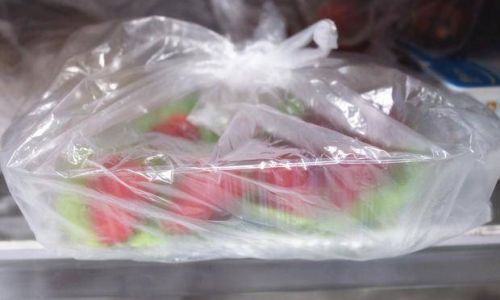Strawberries, with their vibrant red hue, juicy sweetness, and versatile culinary applications, are a beloved fruit worldwide. However, their delicate nature makes them notoriously perishable. A single day left at room temperature or improper storage can transform these gems into a mushy, moldy disappointment. For home cooks, bakers, and health enthusiasts alike, mastering the art of preserving strawberries is essential to minimize waste and maximize enjoyment. This comprehensive guide delves into the science behind strawberry spoilage, practical storage methods, and innovative preservation techniques to ensure your berries stay fresh for as long as possible.

Understanding Strawberry Spoilage: The Enemies of Freshness
To effectively preserve strawberries, one must first grasp why they deteriorate so quickly. Strawberries are composed of approximately 91% water, making them highly susceptible to moisture-related issues. Their thin, porous skin lacks the protective waxy coating found on fruits like apples or oranges, leaving them vulnerable to physical damage, microbial invasion, and dehydration.
Several factors accelerate spoilage:
- Moisture and Humidity: Excess moisture creates a breeding ground for mold and bacteria, while low humidity causes shriveling.
- Ethylene Gas: Strawberries are sensitive to ethylene, a natural plant hormone emitted by certain fruits (e.g., apples, bananas) that speeds up ripening and decay.
- Temperature Fluctuations: Warm environments accelerate metabolic processes, while freezing without proper preparation damages cell structures.
- Physical Damage: Bruising or punctures from rough handling expose the flesh to pathogens.
Preparation: The First Step to Longevity
Proper preparation before storage is non-negotiable. Follow these steps to extend your strawberries’ shelf life:

- Inspect and Sort: Immediately after purchase or harvest, discard any berries with visible mold, soft spots, or damage. One rotten strawberry can spoil the entire batch due to mold spores spreading rapidly.
- Avoid Premature Washing: Resist the urge to rinse strawberries until ready to eat. Excess moisture from washing accelerates spoilage. If they must be cleaned, pat them dry gently with a paper towel or salad spinner.
- Leave Stems Intact: The green calyx (stem) acts as a natural barrier against moisture loss and contamination. Remove it only before consumption.
- Ventilation is Key: Store strawberries in containers that allow air circulation, such as breathable baskets or colanders, to prevent condensation buildup.
Refrigeration: The Short-Term Solution
Refrigeration is the most common method for preserving strawberries, but execution matters. Follow these guidelines for optimal results:
- Temperature Control: Set your refrigerator between 34°F and 36°F (1°C–2°C). Colder temperatures may cause freezer burn, while warmer zones risk spoilage.
- Container Selection:
- Avoid Airtight Containers: While sealing berries in plastic bags or Tupperware seems logical, trapped moisture can lead to sogginess. Instead, use containers lined with paper towels to absorb excess humidity.
- Perforated Containers: Punch holes in plastic containers or use mesh produce bags to enhance airflow.
- Glass Containers: Opt for glass with loose-fitting lids to balance humidity without dehydration.
- Location Matters: Store strawberries in the main compartment of your fridge, not the crisper drawer, which is designed for higher-humidity vegetables like leafy greens.
- Layering Technique: Arrange berries in a single layer to prevent crushing. If stacking is necessary, place paper towels between layers.
Freezing: The Long-Term Strategy
For those who buy strawberries in bulk or during peak season, freezing is a game-changer. Frozen strawberries retain their flavor and nutritional value for up to 12 months when done correctly:
- Pre-Freezing Preparation:
- Wash and Hull: Gently rinse berries under cold water, then remove the stems using a straw or paring knife.
- Dry Thoroughly: Pat dry with a clean kitchen towel or use a salad spinner to eliminate surface moisture.
- Slice or Leave Whole: Sliced strawberries thaw faster and are ideal for smoothies, while whole berries work for baking.
- Flash Freezing:
- Spread berries in a single layer on a baking sheet lined with parchment paper.
- Freeze for 2–3 hours until solid. This prevents clumping.
- Storage:
- Transfer frozen berries to airtight freezer-safe bags or containers.
- Label with the date and intended use (e.g., “smoothies” or “baking”).
- Thawing Tips:
- Use frozen berries directly in recipes without thawing to maintain texture.
- For eating fresh, thaw in the refrigerator overnight or at room temperature for 30 minutes.
Alternative Preservation Methods
Beyond refrigeration and freezing, several creative techniques can extend strawberry season:

- Dehydration:
- Slice berries thinly and arrange on dehydrator trays.
- Dry at 135°F (57°C) for 8–10 hours until leathery.
- Store in airtight jars for up to a year. Use in granola, trail mix, or tea.
- Jam and Jelly Making:
- Cook strawberries with sugar and pectin to create preserves.
- Process jars in a water bath canner for shelf-stable storage.
- Strawberry Vinegar:
- Infuse sliced berries in apple cider vinegar for 2–3 weeks.
- Strain and use in salad dressings or cocktails.
- Strawberry Leather:
- Purée berries, spread thinly on a silicone mat, and dehydrate until pliable.
- A healthy snack for kids and adults alike.
Common Mistakes to Avoid
Even with the best intentions, errors can sabotage your preservation efforts. Steer clear of these pitfalls:
- Storing Unwashed Berries in Plastic Bags: Trapped moisture creates a petri dish for mold.
- Ignoring Ethylene-Producing Neighbors: Avoid storing strawberries near apples, bananas, or tomatoes.
- Skipping the Stem: Removing the calyx before storage exposes the flesh to air and pathogens.
- Overcrowding Containers: Crushed berries release juices that accelerate spoilage.
- Thawing and Refreezing: Repeated temperature changes degrade texture and flavor.
Advanced Tips for Strawberry Enthusiasts
For those seeking to push the boundaries of preservation, consider these expert techniques:
- Vinegar Rinse:
- Soak berries in a solution of 1 part white vinegar to 3 parts water for 5 minutes.
- Rinse thoroughly and dry. Vinegar kills mold spores without affecting taste.
- Vacuum Sealing:
Use a vacuum sealer to remove air from bags, slowing oxidation and freezer burn.

- Commercial Produce Preservatives:
Products like “FreshPaper” or “BluApple” absorb ethylene and extend shelf life.
- Climate-Controlled Storage:
Invest in a wine fridge or produce-specific cooler for precise temperature/humidity control.
Conclusion: Savoring Strawberries Year-Round
Preserving strawberries is both a science and an art. By understanding the factors that contribute to spoilage and employing a combination of refrigeration, freezing, and creative preservation methods, you can enjoy these jewels of summer long after their peak season. Whether you’re tossing them into a morning smoothie, baking a decadent pie, or savoring a handful fresh from the freezer, proper storage ensures that not a single berry goes to waste. Experiment with these techniques to find the perfect balance between convenience and freshness, and let the sweet taste of strawberries brighten your meals every month of the year.







0 comments